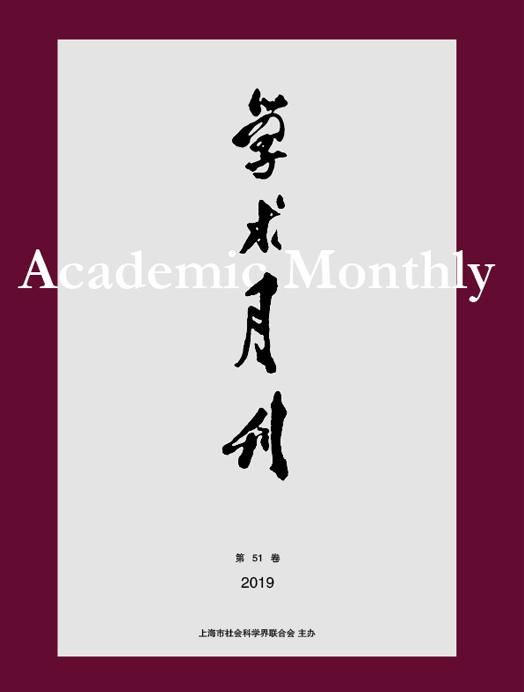Citation:
Jiming CAI, Yueyang CAO and Leyi LIU. On Labour-Commanded and Labour-Embodied in Value Determination and Their Relation[J]. Academic Monthly, 2022, 54(6): 61-72.

On Labour-Commanded and Labour-Embodied in Value Determination and Their Relation
-
Abstract
In the history of economic thought, it is generally believed that Adam Smith has a dual or plural theory of value. On the one hand, he proposed a single-element theory of value that labor-commanded determines value; on the other hand, he pointed out that labor-embodied and three types of income co-determine value which composite as a multi-element theory of value. Therefore, whether labour-commanded or labor-embodied determines value becomes a focus of long-standing debate among economists. To have a comprehensive and accurate understanding of Smith’s labor-commanded theory and labor-embodied theory, this paper reviews and analyzes the related opinions and misunderstandings in the history of economic thought. Then, in the framework of the general theory of value, this paper further discusses the different roles of Smith’s labor-commanded and labor-embodied in value determination and value measurement. This paper concludes that from an individual micro point of view, the ratio of labor-commanded to labor-embodied is equal to the ratio of comprehensive productivity of the department; from an aggregative macro perspective, total value = total amount of labor-commanded = total amount of labor-embodied; and the proposition that total value equals to the total labor valid as the measurement of value, it cannot prove that value is created by labor alone.
-

-
References
-
Access
-
-
[1]
Lei ZHAO
. “Labor Determines Value” Is the Result of Labor Alienation. Academic Monthly,
2019, 51(12): 51-59.
-
[2]
. . Academic Monthly,
2017, 49(04): 104-112.
-
[3]
LIU Zhiyang
. Hybrid Value Theory in the Metaverse Age. Academic Monthly,
2023, 55(7): 74-88.
-
[4]
Chunfang GU
. Reinterpreting the Value of Chekhov’s Ivanov in the History of Drama. Academic Monthly,
2021, 53(10): 162-172.
-
[5]
. . Academic Monthly,
2017, 49(08): 42-50.
-
[6]
Cheng Sumei
. . Academic Monthly,
2018, 50(5): 36-44.
-
[7]
Liwen ZHANG
. The Modern Value of Li Tuixi’s Humanistic Spirits. Academic Monthly,
2022, 54(2): 5-14.
-
[8]
WU Xinjun
. . Academic Monthly,
2023, 55(5): 162-167.
-
[9]
Linhe HAN
. On the Problem of Overdetermination in Kant’s Philosophy. Academic Monthly,
2020, 52(8): 37-45, 55.
-
[10]
Yi ZHOU
. New Paths in the Study of Emerging Generation Values and Behavior Patterns. Academic Monthly,
2021, 53(10): 130-141.
-
[11]
Huiying FANG
. The Value Orientation and Standardized Construction of the Principle of Modesty in Criminal Law. Academic Monthly,
2022, 54(7): 117-125.
-
[12]
CHENG Dazhong
. The Value Chain Network Basis of China‘s Belt and Road Initiative. Academic Monthly,
2023, 55(9): 31-42.
-
[13]
,
. . Academic Monthly,
2016, 48(12): 63-74.
-
[14]
Hong ZHU
, Zhenzhong WANG
. Zhan Mingduo, the “Last Government Student” and the Academic Value of Zhenxian Zagao. Academic Monthly,
2020, 52(11): 168-178.
-
[15]
Guanbin SHI
. Normative Construction and Value Orientation of Mental Damage Compensation System in Civil Code. Academic Monthly,
2022, 54(4): 121-130.
-
[16]
Yi ZHAI
. The Transition of Relationship and Value between the Administrative Subject as Franchisor and the Object of Franchisee. Academic Monthly,
2019, 51(6): 78-93.
-
[17]
,
,
. . Academic Monthly,
2017, 49(05): 48-48.
-
[18]
Zhesheng TANG
. How to Evaluate: The Criticism Standards’ Foundation and Value Analysis of Chinese Modern Popular Literature. Academic Monthly,
2019, 51(4): 121-127, 138.
-
[19]
. . Academic Monthly,
2017, 49(07): 165-179.
-
[20]
Gonglong WANG
. The Common Value of Human Being in Context of Karl Marx’s Theory of World History. Academic Monthly,
2022, 54(7): 5-17.
-
-



 沪公网安备 31010102003103号
沪公网安备 31010102003103号 DownLoad:
DownLoad: